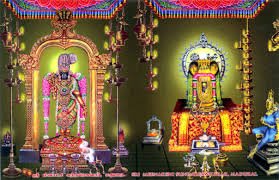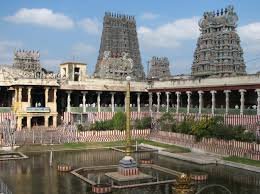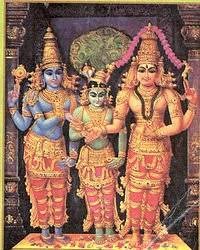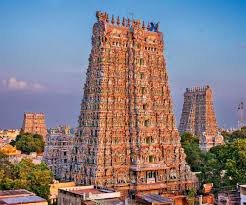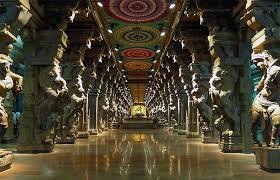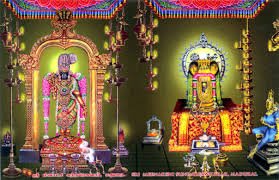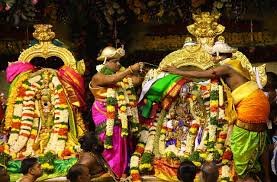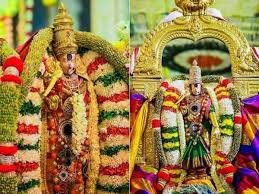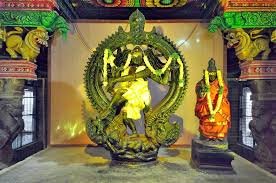SUNDESHWAR (MEENAKSHI) Meenakshi Sundareswarar Temple
Arulmigu Meenakshi Sundareswarar Temple, also known as Arulmigu Meenakshi Amman Thirukkovil, is a historic Hindu temple located on the southern bank of the Vaigai River in the temple cityof Madurai, Tamil Nadu, India. It is dedicated to the goddess Meenakshi, a form of Parvati, and her consort, Sundareshwarar, a form of Shiva. The temple is at the centre of the ancient temple city of Madurai mentioned in the Tamil Sangam literature, with the goddess temple mentioned in 6th-century CE texts.
This temple is one of the Paadal Petra Sthalams, which are 275 temples of Shiva that are revered in the verses of Tamil Saiva Nayanars of the 6th-9th century CE.
The west tower (gopuram) of the temple is the model based on which the Tamil Nadu State Emblem is designed.
Legend
The goddess Meenakshi is the principal deity of the temple, unlike most Shiva temples in South India where Shiva is the principal deity.According to the Tamil text Tiruvilaiyatarpuranam, King Malayadwaja Pandya and his wife Kanchanamalai performed a Yajna seeking a son for succession. Instead, a daughter was born out of the fire who was already 3 years old and had three breasts. Shiva intervened and said that the parents should treat her like a son, and when she meets her husband, she will lose the third breast. They followed the advice. The girl grew up, the king crowned her as the successor and when she met Shiva, his words came true, she took her true form of Meenakshi.According to Harman, this may reflect the matrilineal traditions in South India and the regional belief that “penultimate [spiritual] powers rest with the women”, gods listen to their spouse, and that the fates of kingdoms rest with the women.According to Susan Bayly, the reverence for Meenakshi is a part of the Hindu goddess tradition that integrates with the Hindu society where the “woman is the lynchpin of the system” of social relationships.
The marriage of Meenakshi and Shiva was a grand event, with all gods, goddesses and living beings gathered. Vishnu is believed to be the brother of Meenakshi, giving her away to Shiva at the wedding.
History
The town of Madurai is ancient and one mentioned in Sangam era texts.These are dated to be from the 1st to 4th century CE.Some early Tamil texts call Madurai as Koodal, and these portray it as a capital and a temple town where every street radiated from the temple. Goddess Meenakshi is described as the divine ruler, who along with Shiva were the primary deities that the southern Tamil kingdoms such as the Pandya dynasty revered.The early texts imply that a temple existed in Madurai by the mid-6th century.In medieval literature and inscriptions, it is sometimes referred to as Kadambavanam (lit. “forest of Kadamba”) or Velliambalam (lit. “silver hall” where Shiva danced). It was described to be the Sangam of scholars, or a place where scholars meet. It is mentioned in the Tamil text Tiruvilayadalpuranam and the Sanskrit text Halasya Mahatmya.
It is one of the shrines of the 275 Paadal Petra Sthalams.
Early Tamil texts mention the temple and its primary deity by various epithets and names. Thirugnanasambandar, the famous Hindu saint of Saiva philosophy for example, mentioned this temple in the 7th century, and described the deity as Aalavaai Iraivan. The origin of the temple is mentioned in these early Tamil texts, some in the regional Puranam genre of literature. All of these place the temple in ancient times and include a warrior goddess, but the details vary significantly and are inconsistent with each other. Some link to it deities they call Aalavaai Iraivan and Aalavaai Annal, or alternatively Angayar Kanni Ammai. Some link its legend to other deities such as Indra who proclaim the primacy of the goddess, while some describe Hindu gods appearing before ancient kings or saints urging wealthy merchants to build this temple in the honour of a goddess. One legend describes a childless king and queen performing yajna for a son, they get a daughter who inherits the kingdom, conquers the earth, meets Shiva ultimately, marries him, continues to rule from Madurai, and the temple memorializes those times. Scholars have attempted to determine the history of the temple from inscriptions found in and outside Madurai, as well as comparing the records relating to South Indian dynasties. These largely post-date the 12th century.









